Not too much of a change since July’s Bloom Day post, when I predicted the Persicaria amplexicaulis would own the garden in August, and the vibrant crimson spikes have done just that. This knotweed is the legacy of foolishly trialing just about every reasonably drought tolerant, classic border perennial in the early years of making the garden. A very quixotic notion in this dry-summer climate that would prefer plants just go dormant, like many of our natives do. Still, there are always surprises to be found, like the persicaria.
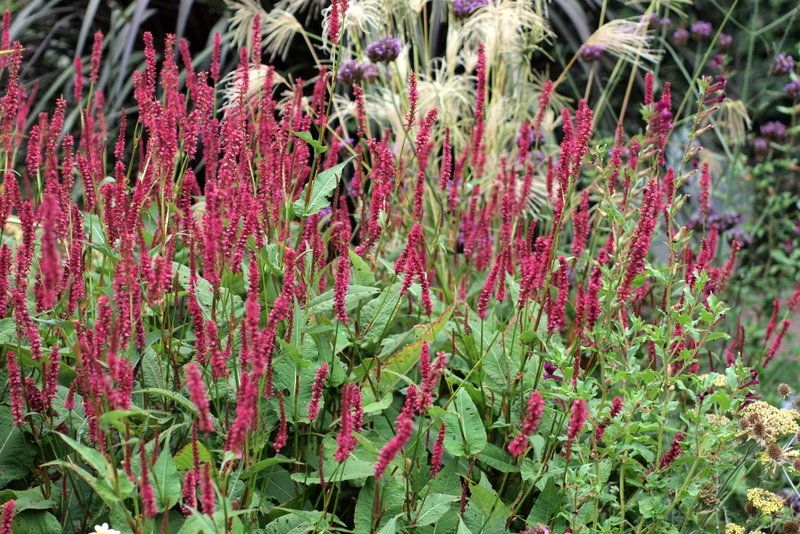
It still amazes me that this persicaria thrives in my zone 10 garden, in full sun. A fabulous bee plant too. These kinds of perennials are as rare a sight here as desert plants in a wet, zone 5 garden. It’s always about the challenge, isn’t it?
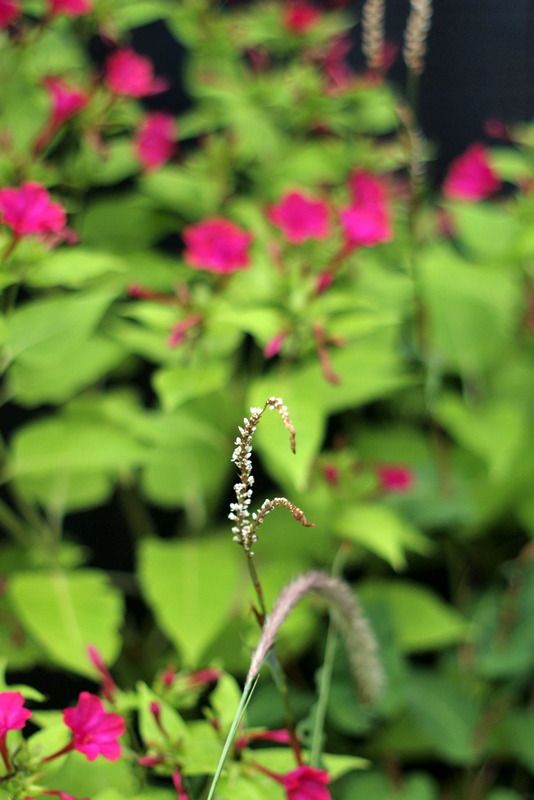
Where the common red persicaria loves the dry, heavy clay of August, the other varieties always struggle. I’m trying the white-flowered persicaria again, so this is a new clump, and it’s just managing to squeeze out a few blooms against a backdrop of the unstoppable ‘Limelight’ Mirabilis jalapa which self-sows.
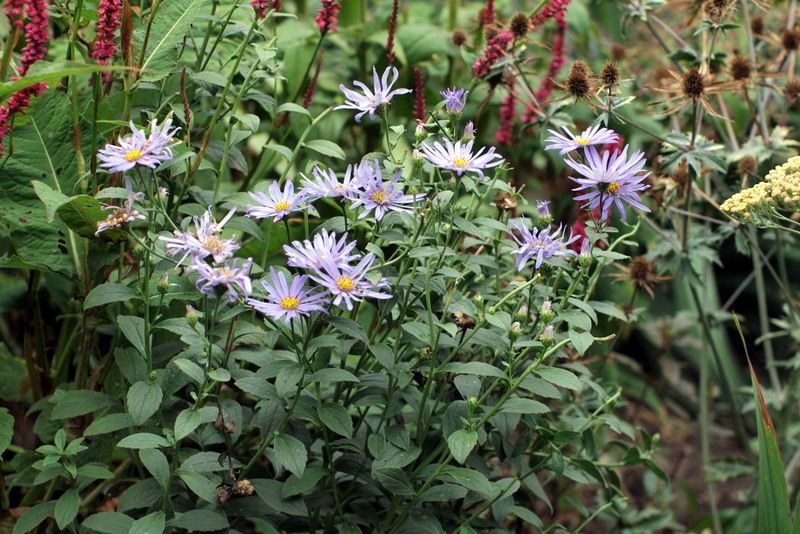
Even though I long ago gave up on the concept of a summer garden of strictly perennials, I usually include a few stalwarts for late summer. The ‘Monch’ aster is another surprisingly reliable perennial in zone 10. Finding perennials that can tolerate such a long, dry growing season with very little winter chill is a continual puzzle that still absorbs me. I like the seasonal “movement” they give the garden.

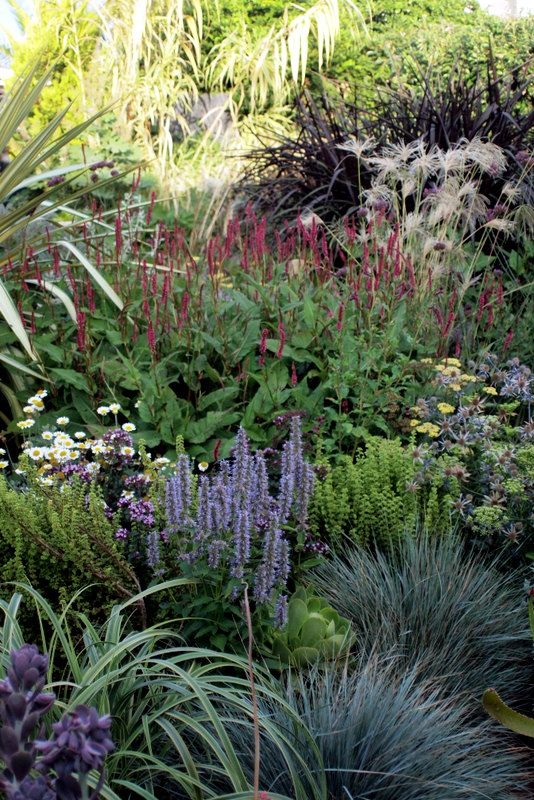
But like everyone else, I have been trialing agastaches. I brought in a few kinds in spring and early summer. Planting agastaches in fall has always been problematic (they disappear by spring). This one is the stalwart ‘Blue Fortune’ I grabbed at a local nursery.
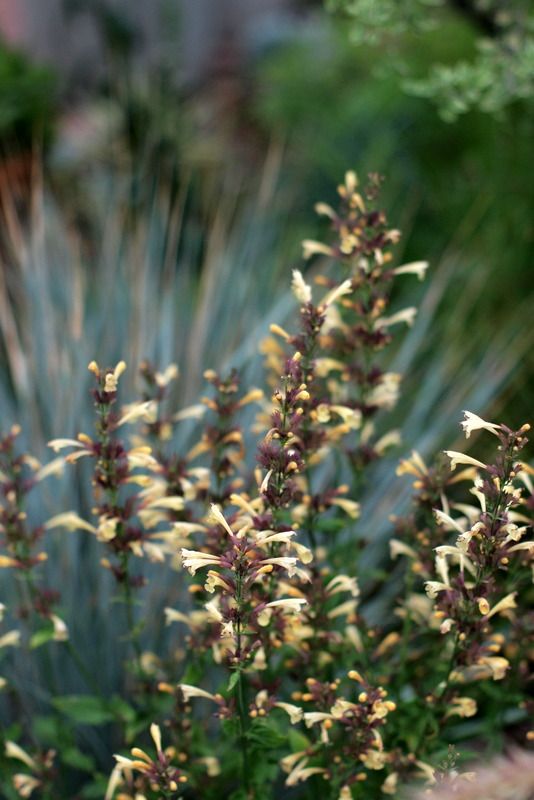
Agastache ‘Summer Glow’
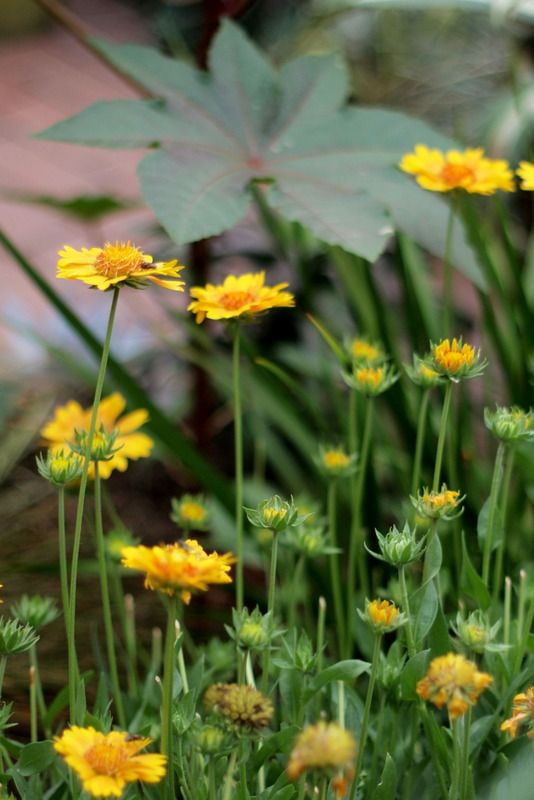
Other good daisies for summer here are the gaillardias, and ‘Oranges & Lemons’ citrusy colors makes it one of my favorites.
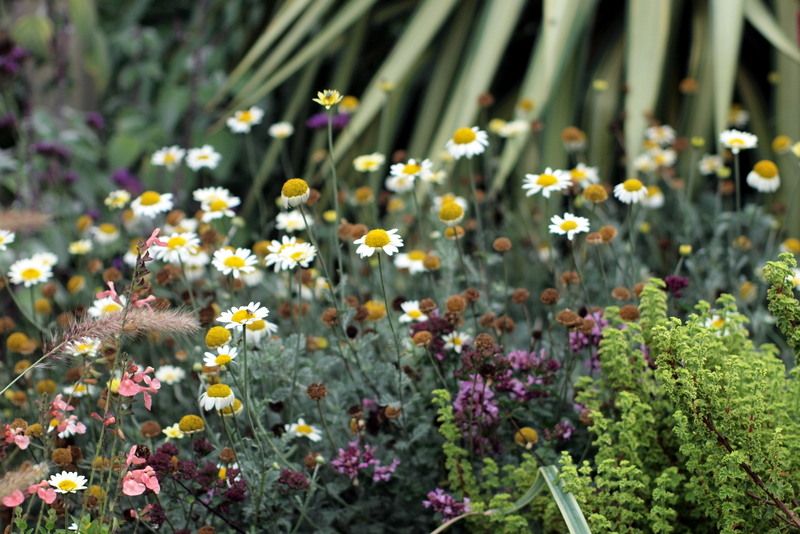
The simple buttery goodness of anthemis is another continual favorite. This one is ‘Susanna Mitchell.’ If ‘Sauce Hollandaise’ is at all different, I haven’t noticed. I have read that ‘Cally Cream’ is considered to be more reliably perennial where this anthemis tends to disappear after a season. Not a problem here. Incredibly easy from cuttings in any case, and bulks up fast in one season.
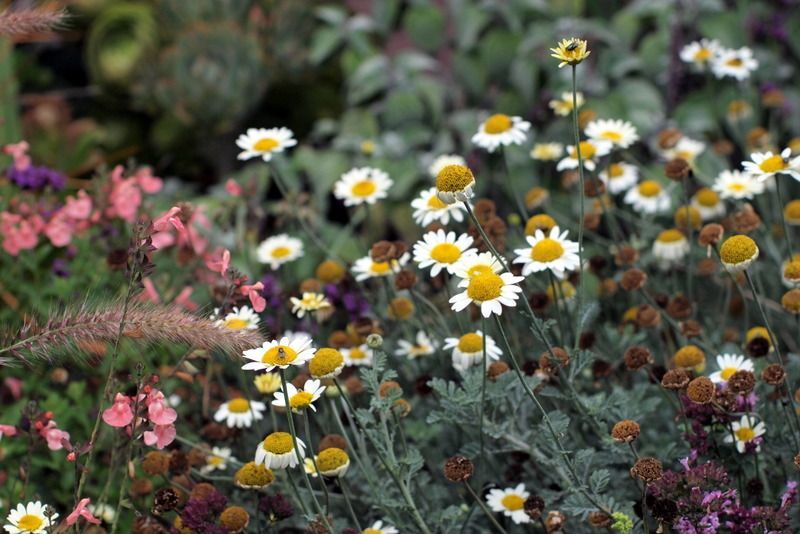
The anthemis with Salvia greggii
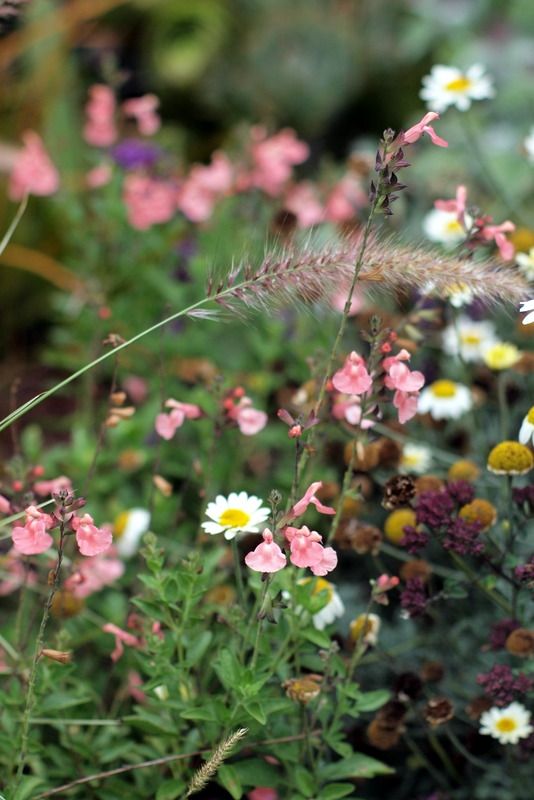
A nice feast for insect pollinators and hummingbirds
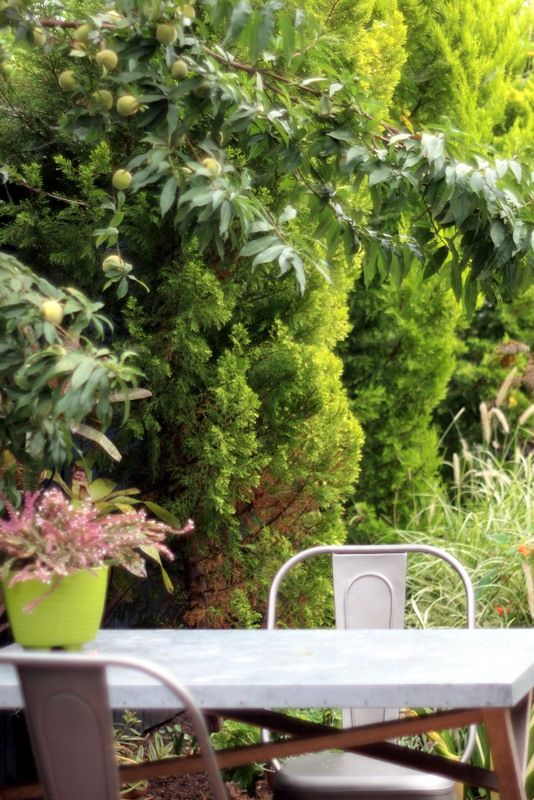
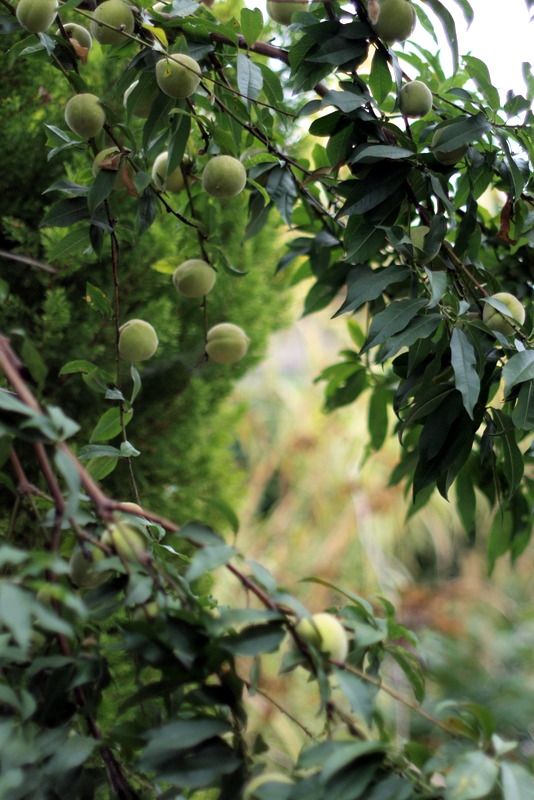
Speaking of summer feasts, I am in stone-fruit love with my neighbor’s peach tree. Or maybe it’s an apricot tree. (This is its first crop.) I’ve never experienced fruit-tree lust before, but now I’ve got it bad. Having to duck under its branches to sit at the table is a sacrifice I’m willing to make. Is this not the best of all possible worlds: A fruit tree taking up no space in my garden, within picking distance? Oh, hell, yes. The fruit is just starting to color up. Will they be edible? The suspense is almost unbearable. The branches were wall-to-wall with fruit, just inches apart, and some quick Internet research brought up the importance of thinning the fruits. I may have thinned my side too late. Common wisdom says to thin as soon as fruit has set after bloom to lessen the nutrient burden on the tree. Also saves the tree from weighty branches prone to wind damage. Some diehards even thin out the blooms before fruit set. The little tree was given a buzz cut, topped within an inch of its life last year, which was fairly alarming, but I’ve since read this is a technique some recommend for better fruit bearing. Possibly by next Bloom Day we’ll have sampled some fruit. My neighbor didn’t thin his side, so the fruit might turn out bland and insipid. Offering advice just seems a little too pushy for now.
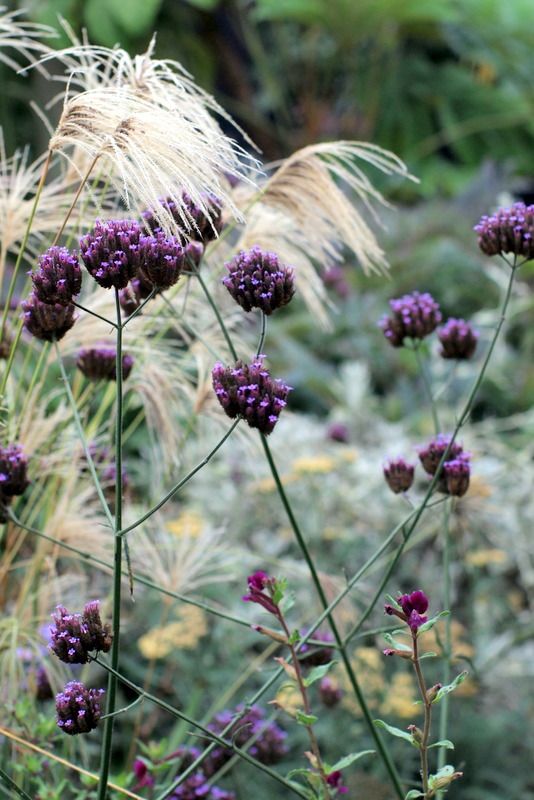
Self-sown Verbena bonariensis. The dwarf kinds actually seem like that rare good idea where dwarfism in plants is concerned, but so far they’ve been disappointing and weak growers. ‘Little One,’ ‘Lollipop,’ whatever the name, they dwindle and limp along, never very many blooms at one time. The self-sown species is robust and reliable.
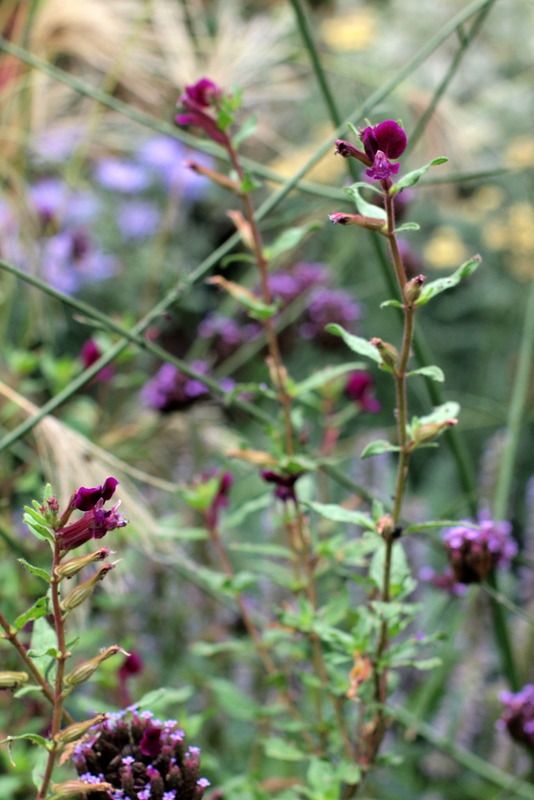

Cuphea viscosissima attracts lots of pollinators, has a lovely rich color, but some seriously ratty leaves. If it seeds around I’ll let some stay, but I won’t go out of my way to grow it again.
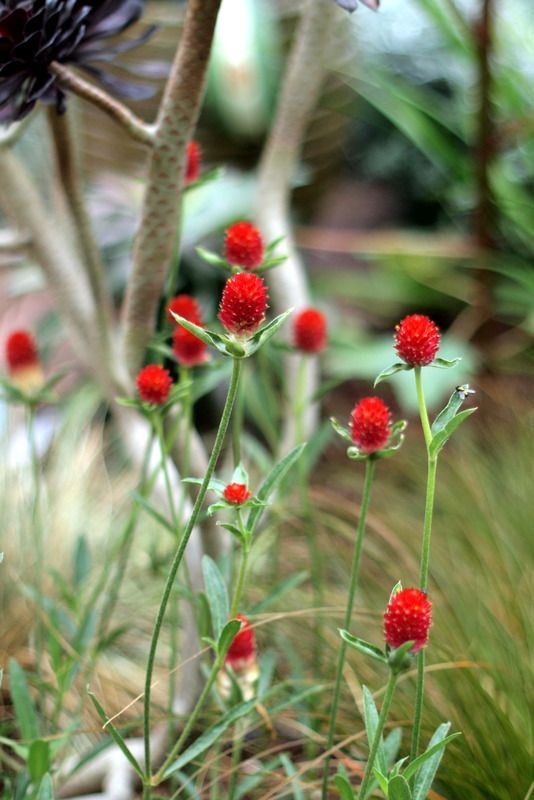
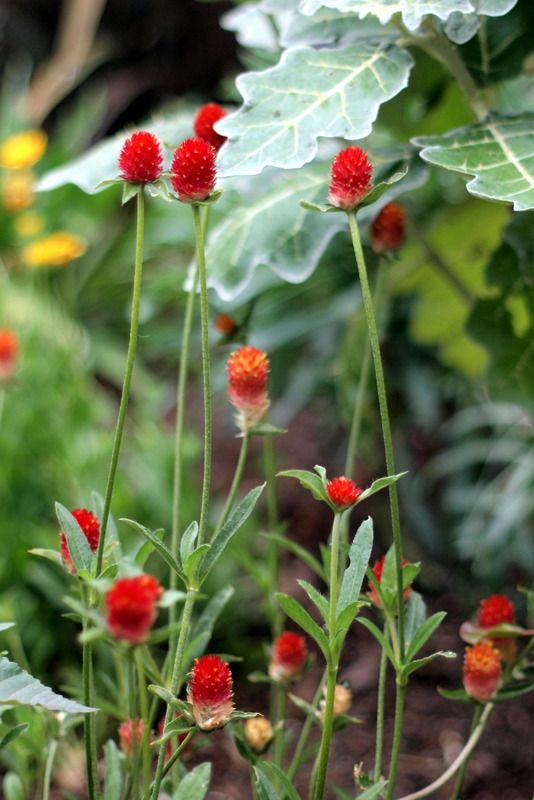
Tall, knobby gomphrena in deep orange. Yes, please.
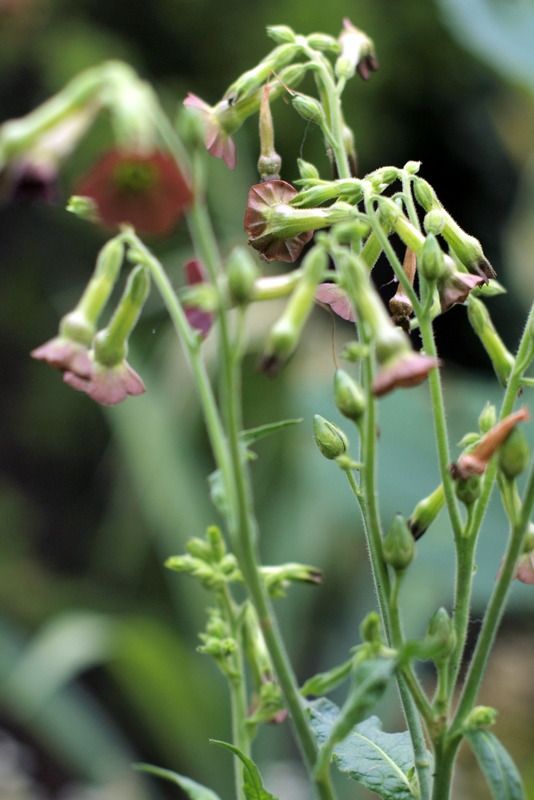
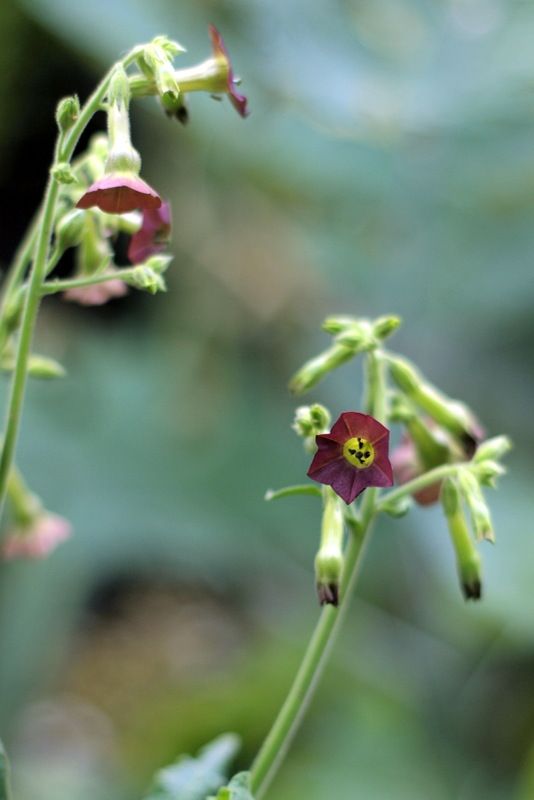
Nicotiana are back, progeny from Nicotiana ‘Ondra’s Brown Mix.’ These are new plants that seeded into the bricks. The ones that bloomed all winter were pulled out in June to make room for early summer plants.
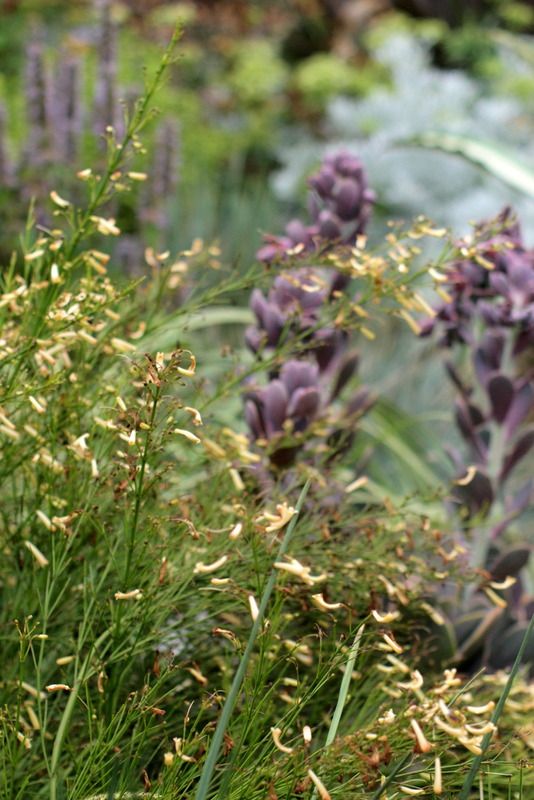
Russelia is incredibly tough, long blooming, and beloved by hummingbirds.
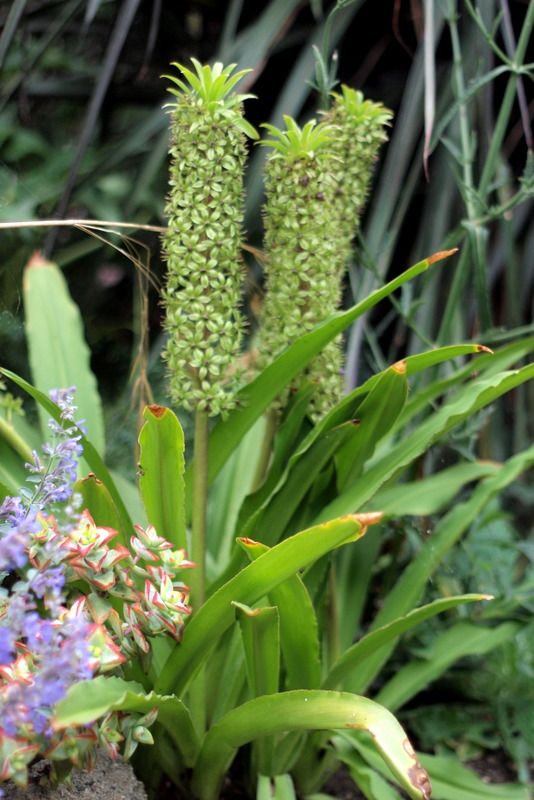
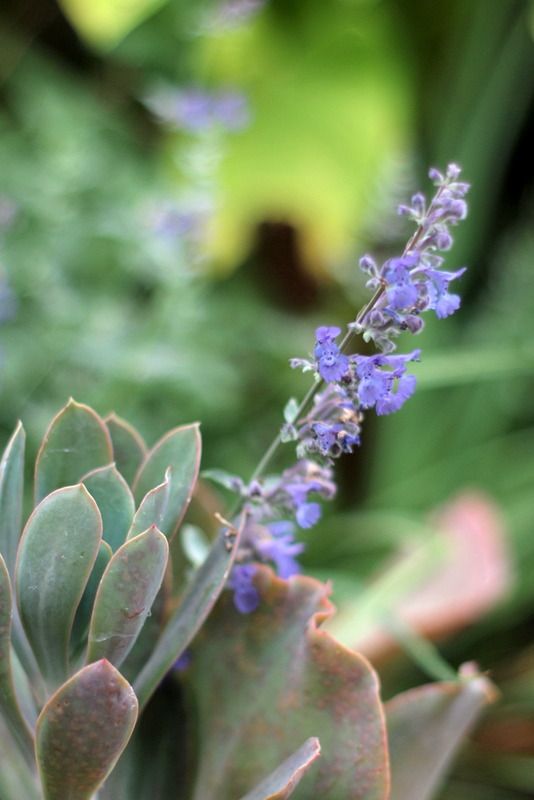
Nepeta ‘Walker’s Low’ is having a strong rebloom after being cut back hard in June. Eucomis were shaken out of their pots and grown in the ground this year. Much more upright in full sun and dry conditions, if just a tad singed on the leaf tips.
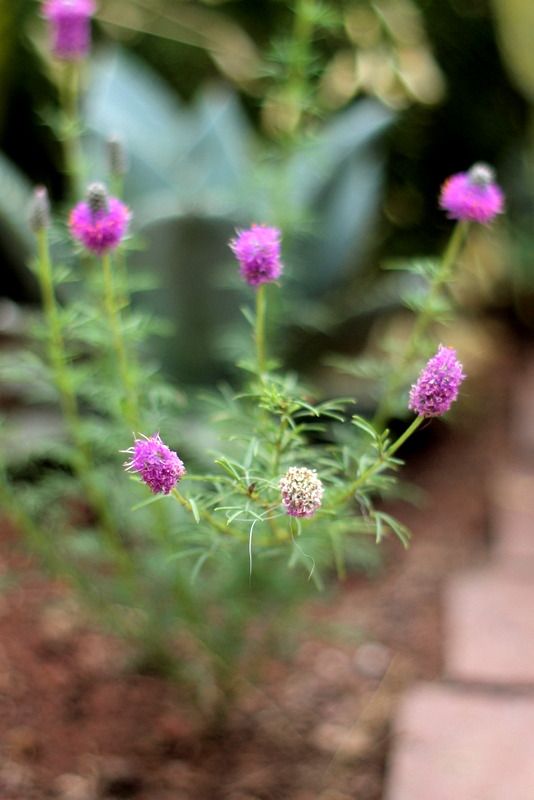
The prairie clover, Dalea purpurea, just planted in July, lightly blooming.

Lotus jacobaeus beginning to bloom again after a deep soaking in early August. I know what’s attracting flies to the garden this year.
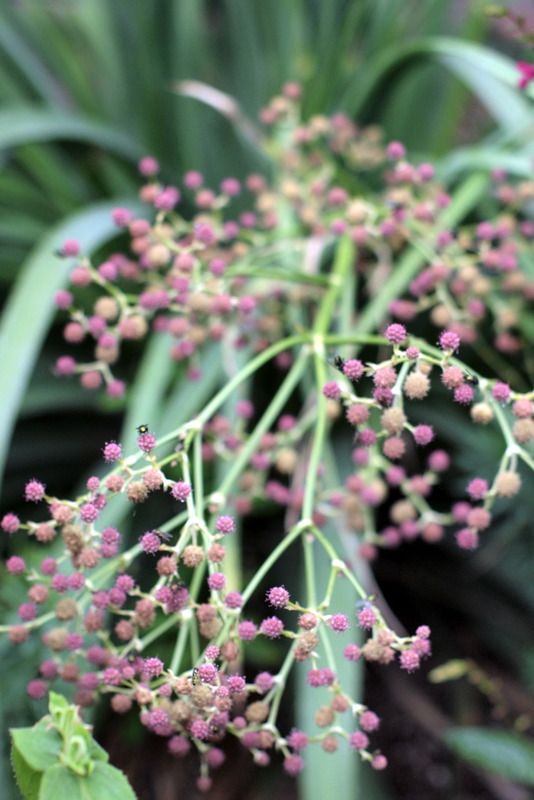
That would be Eryngium pandanifolium, whose blooms carry the light scent of old socks, noticeable mainly on still mornings. Possibly its one failing.
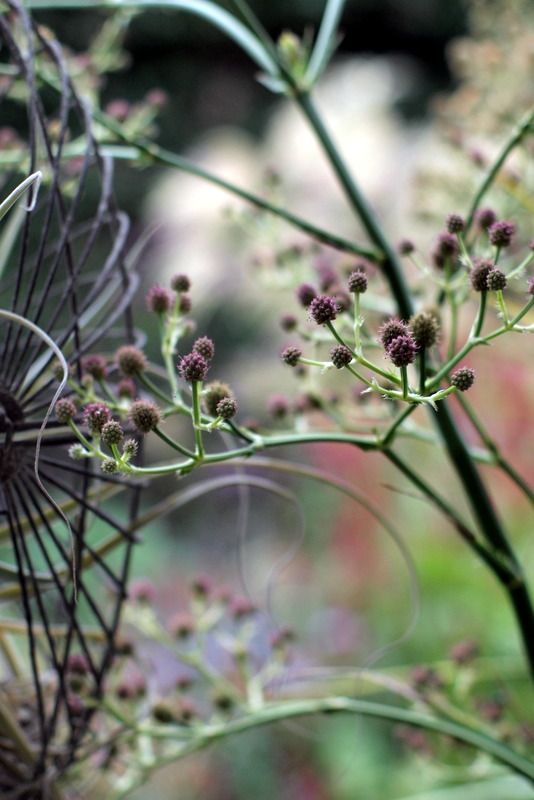

The weight of the blooms is sending some of the stalks earthward. This stalk remains upright by leaning on a hanging caged tillandsia.
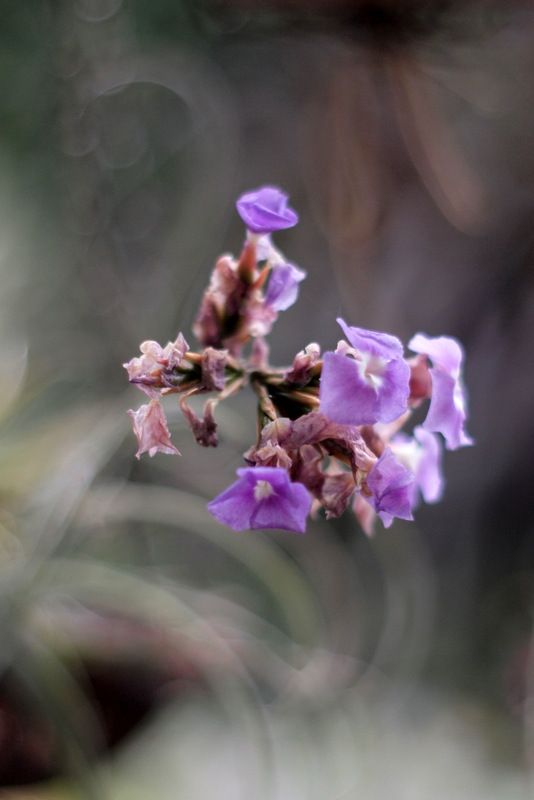
The tillandsia has the scent of grape Sweet Tarts.

Salvia chiapensis is rarely out of bloom.
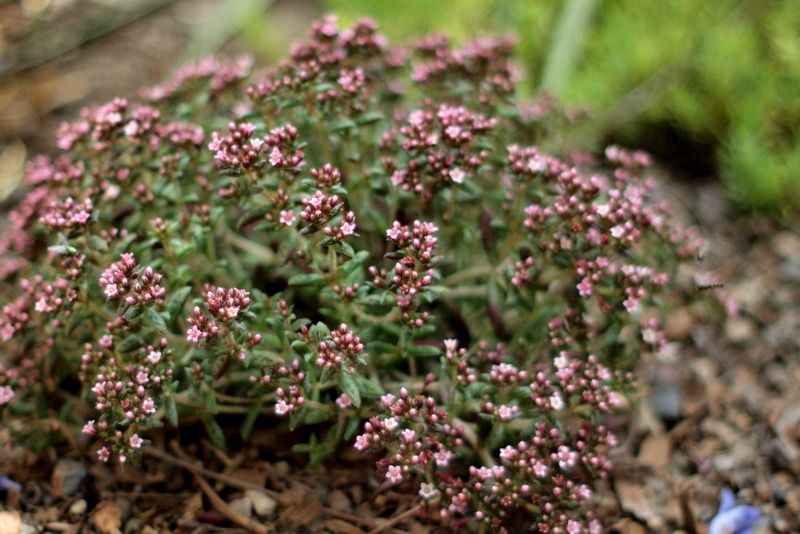
This little cutie was found at a local nursery this summer, the South African Crassula exilis subsp. cooperi. Very thyme-like in appearance, growing to just 2-3 inches high. To zone 8.
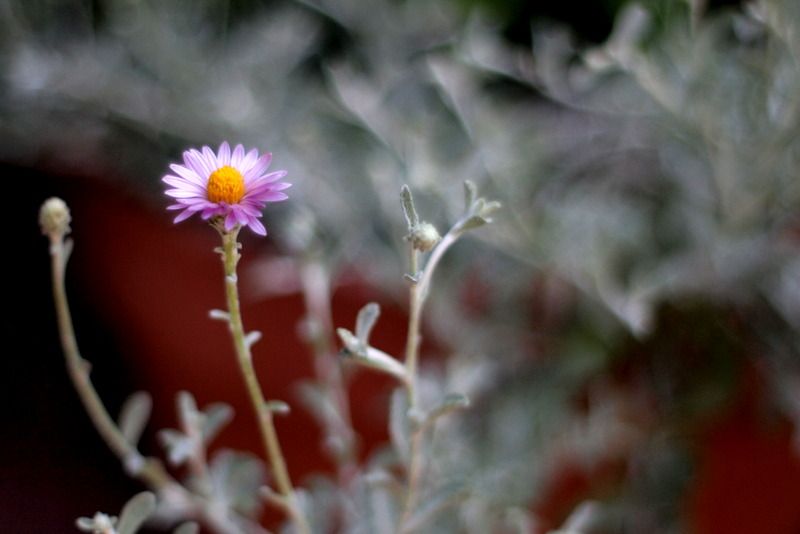
A California native new to me this summer, Lessingia filaginifolia. I’ll probably move it to the gravel garden in fall.
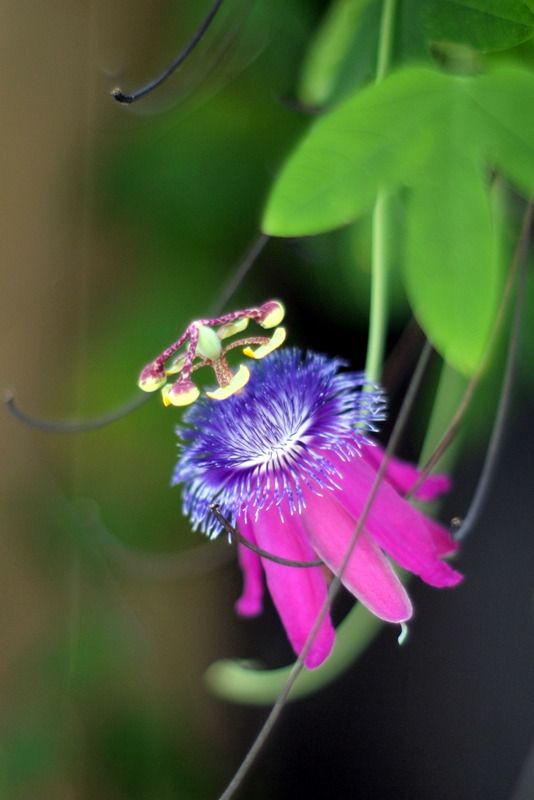
The garlic passionflower is blooming lightly in August and appreciates occasional deep watering.
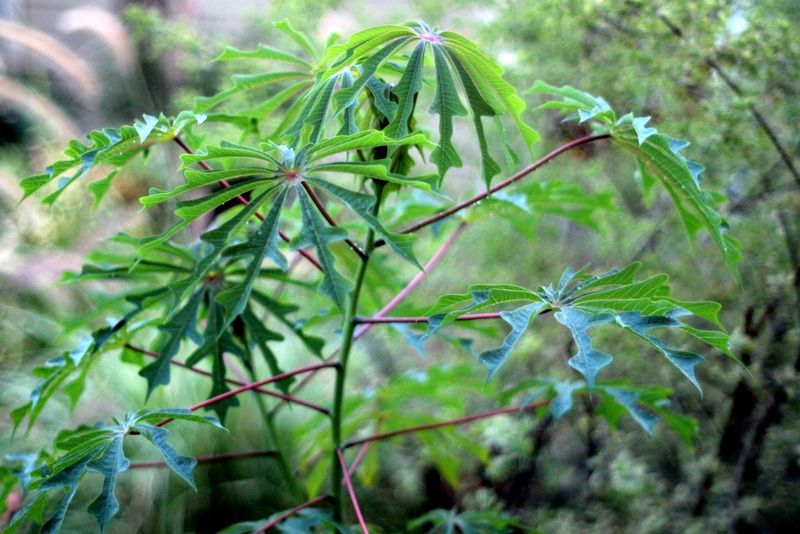
After wondering every summer how to prune this crazy tropical, whose new leaves push out like a mop atop a 6-foot trunk, the matter was taken out of my hands. Here it is throwing new growth after having its trunk snapped off at the base in a garden mishap. (A tree fell on it).
Carol at May Dreams Gardens graciously hosts Bloom Days and gathers links of participating blogs there, 92 when I last checked.

The challenge indeed! We gardeners are a strange bunch, always longing to grow plants better suited to climates far different from our own. Ah, the wafting fragrances of dirty socks and grape Sweet Tarts; must be like having an adolescent living in your garden.
Peter, like an adolescent living in the garden, that’s exactly right!
You’ve solved a mystery for me. At certain times of the day there is a lightly unpleasant odor in a corner of my garden. I’ve been trying to pin down the source and was vaguely suspicious of the Eryngium. Old socks indeed!
Your August looks absolutely wonderful.
Loree, it’s more pronounced when the blooms are first open. Until I pointed it out and dragged people in for a close sniff, nobody else noticed it.
Hoov, my bloom day posts are so repetitive! I was looking back and it’s the same plants photographed different ways. At least I found some reliable, long-blooming plants, I guess…
Beautiful are the big picture. Incredible. Greetings from Poland.
Your August garden looks like it’s blooming with life! I like the look of the persicaria. I was finally able to grow Tall Verbena a few years ago after a several years of trying. Now it’s established and I willl probably have it forever, but that’s ok!
Your Bloom Day posts always provide good ideas for plants that might work for me, especially in the drier areas of my garden. I hope the peaches/apricots live up to their promise!
Hello! beautiful garden and pictures! I would like to know the name of the last plant (the tropical plant), as I just fell in love with it seeing your picture… is it a Manihot?
Joanna, thank you for kind words. Sending warm greetings back to Poland from So. Calif!
Dorothy, that persicaria really jumpstarts an August garden. That verbena is not a pest for me. I had to hunt for those seedlings and move them where I wanted them, less than a half dozen at most.
Kris, Bloom Days are the best for learning about new plants. If you have any fave peach recipes, I’m all ears!
Lisa, you’re right, the last plant is the tropical manihot. Manihot grahamii. Wait til you see the variegated one. I need to hunt that one down again…
Blooming colorful garden looks so beautiful and lively! All the pictures are eye catching! This natural beauty is simply incredible and uncomparable! What a good share by you! Keep blogging!